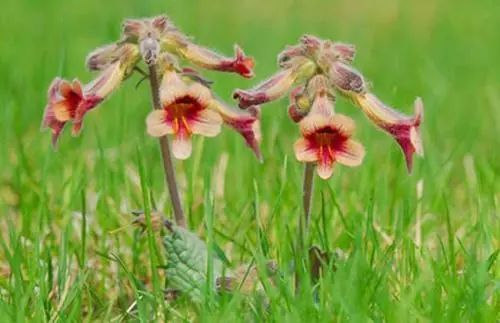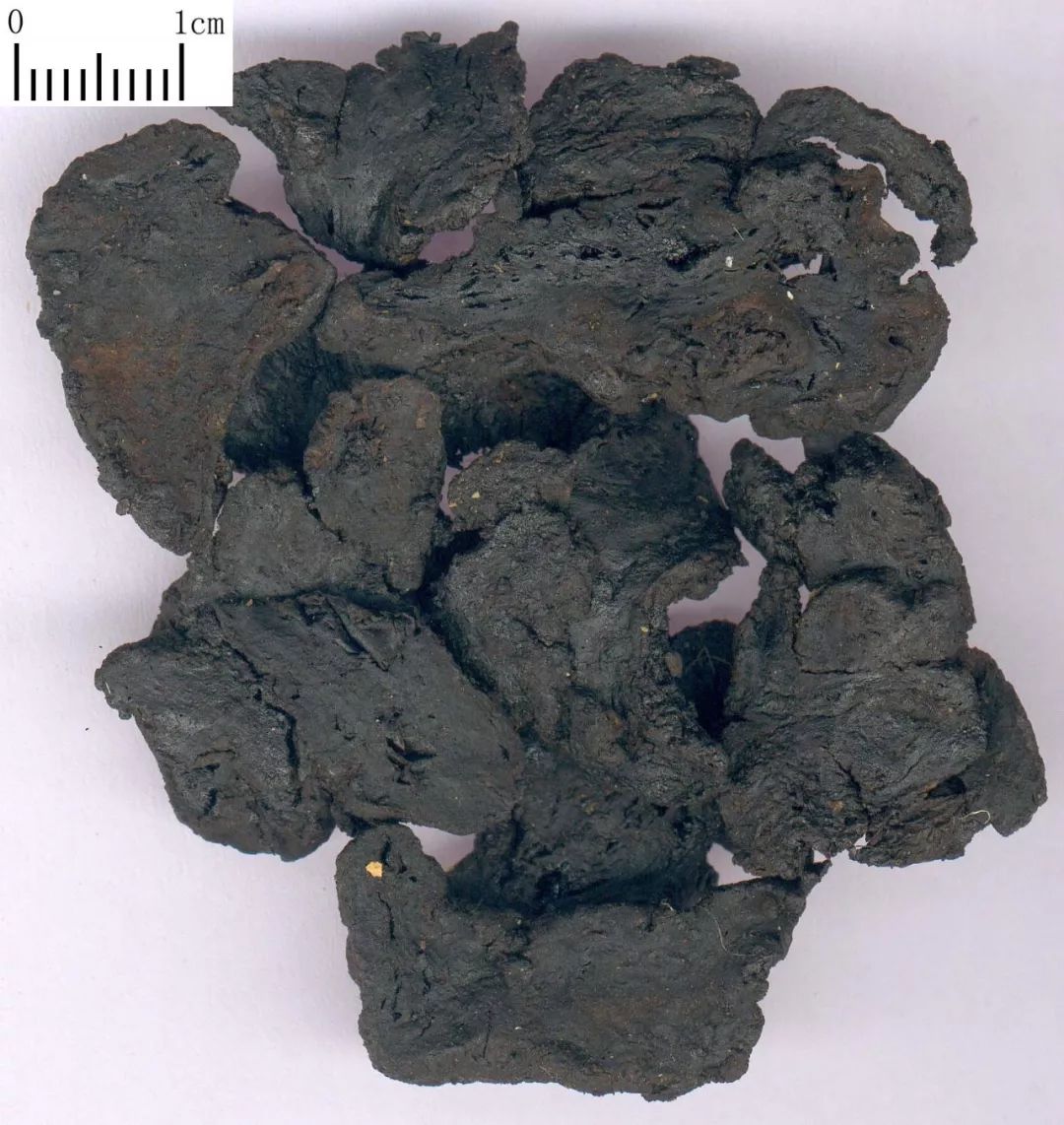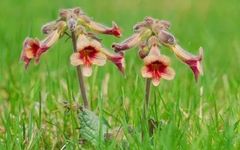
Blood Nourishing Herbs
Prepared Rehmannia Root (Shúdìhuáng)
Illustration of Chinese Herbs

Prepared Rehmannia Root – Original State

Prepared Rehmannia Root – Medicinal Material
Source
“Bencao Shiyi”
Alias
Shudi, Fudi, Dashudi, Shudi Tan
Scientific Name
Radix Rehmanniae Preparata, Prepared Rehmannia Root
Medicinal Use
This product is a processed form of raw Rehmannia Root. It is prepared by stewing raw Rehmannia Root with wine until the wine is absorbed, then drying it until the outer skin is slightly dry, cutting it into thick slices or blocks, and then drying it; or by steaming it with wine until it becomes black and shiny, then drying it until about 80% dry, cutting it into thick slices or blocks, and then drying it.
Properties
Sweet, slightly warm.
Meridians Entered
Liver and Kidney meridians.
Functions
Nourishes blood, enriches yin, benefits essence, and fills marrow.
Clinical Applications
1. Blood deficiency with symptoms of pallor, palpitations, irregular menstruation, and excessive bleeding. This herb is sweet and warm, moistening, nourishing yin and benefiting essence to generate blood, and is a key herb for treating blood deficiency syndrome (“Zhen Zhu Nang”). It is commonly used to treat blood deficiency with symptoms such as pallor, dizziness, palpitations, insomnia, irregular menstruation, and excessive bleeding, often combined with Dang Gui (Angelica Sinensis), Bai Shao (White Peony), and Chuan Xiong (Szechuan Lovage) in formulas like Si Wu Tang (Four Substance Decoction) (“He Ji Ju Fang”). For blood deficiency with palpitations, it can be combined with Yuan Zhi (Polygala Tenuifolia) and Suan Zao Ren (Sour Jujube Seed) for calming the mind; for blood deficiency with excessive bleeding and cold pain in the lower abdomen, it can be combined with Ejiao (Donkey-hide Gelatin) and Ai Ye (Mugwort) for nourishing blood and stopping bleeding, as in Jiao Ai Tang (Ejiao and Mugwort Decoction) (“Jin Kui Yao Lue”); for both qi and blood deficiency, it is often combined with Ren Shen (Ginseng) and Dang Gui, as in Ba Zhen Tang (Eight Treasure Decoction) (“Zheng Ti Lei Yao”).
2. Liver and kidney yin deficiency with symptoms of soreness in the lower back and knees, tidal fever, night sweats, nocturnal emissions, and internal heat with thirst. This herb is sweet and moistening, entering the liver and kidney, and is effective in nourishing yin and blood, making it a key herb for treating liver and kidney yin deficiency syndrome. Ancient texts describe it as “greatly nourishing the true yin of the five organs” and “greatly nourishing the true water”. It can nourish the liver and kidney, benefit essence and marrow, and is used for symptoms such as soreness in the lower back and knees, nocturnal emissions, night sweats, tinnitus, hearing loss, and thirst, often combined with Shan Zhu Yu (Cornus Officinalis) and Shan Yao (Chinese Yam) in formulas like Liang Wei Di Huang Wan (Six Flavor Rehmannia Pill) (“Xiao Er Yao Zheng Zhi Jue”); for treating liver and kidney yin deficiency with upward blazing of empty fire, tidal fever, red cheeks, night sweats, tinnitus, and nocturnal emissions, it is often combined with Zhi Mu (Anemarrhena Rhizome), Huang Bai (Phellodendron Bark), and Shan Zhu Yu in formulas like Zhi Bai Di Huang Wan (Anemarrhena and Phellodendron Rehmannia Pill) (“Yi Fang Kao”).
3. Liver and kidney insufficiency with deficiency of essence and blood, dizziness, tinnitus, and premature graying of hair. This herb has the ability to nourish the liver and kidney, and benefit essence and fill marrow, used to treat deficiency of essence and blood, and premature graying of hair, often combined with He Shou Wu (Fo-Ti), Niuxi (Achyranthes Bidentata), and Tu Si Zi (Dodder Seed) to nourish essence and blood, and darken hair, as in Qi Bao Mei Ran Dan (Seven Treasure Beautifying Pill) (“Yi Fang Ji Jie”); for treating liver and kidney insufficiency with deficiency of essence and blood leading to symptoms of weakness and fatigue, it can be combined with Gui Ban (Tortoise Shell), Suo Yang (Cynomorium Songaricum), and Gou Ji (Cibotium Barometz) for strengthening the kidneys and bones, as in Hu Qian Wan (Tiger Hidden Pill) (“Yi Fang Ji Jie”).
Additionally, Prepared Rehmannia Root Charcoal can stop bleeding and is used for conditions like excessive bleeding due to blood deficiency.
Dosage
Decoction, 9-15g.
Precautions
This herb has a sticky nature, more so than raw Rehmannia Root, which can hinder digestion. It should be avoided in cases of qi stagnation, phlegm accumulation, abdominal distension, poor appetite, and loose stools. For prolonged use, it is advisable to combine it with Chen Pi (Aged Tangerine Peel) and Sha Ren (Amomum Fragrantum) to prevent its sticky nature from obstructing the stomach.
Distinguishing Medicinal Uses
Rehmannia first appeared in the “Shennong Bencao Jing” and is currently used clinically in three forms: fresh, raw, and prepared, all of which have the function of nourishing yin and generating fluids, treating symptoms of yin deficiency and fluid loss. The differences are as follows: Fresh Rehmannia is sweet and bitter, very cold, with a weaker ability to nourish yin but less tendency to cause adverse reactions, excelling in clearing heat and cooling blood, and is often used to treat blood heat and yin deficiency with strong heat evil; Raw Rehmannia is sweet and cold, with a slightly weaker ability to clear heat and cool blood than fresh Rehmannia, but stronger in nourishing yin and generating fluids, with less sticky nature, excelling in treating heat entering the blood and yin deficiency with heat; Prepared Rehmannia is sweet and slightly warm, with a strong sticky nature, entering the liver and kidney, specifically nourishing blood and enriching yin, filling essence and marrow, suitable for those with true yin deficiency and essence deficiency. It excels in treating blood deficiency and liver and kidney deficiency syndromes.
Example Formulas
Si Wu Tang (Four Substance Decoction) (“He Ji Ju Fang”): Prepared Rehmannia Root, Dang Gui, Chuan Xiong, Bai Shao. Used for blood deficiency with symptoms of pallor and irregular menstruation.
Liang Wei Di Huang Wan (Six Flavor Rehmannia Pill) (“Xiao Er Yao Zheng Zhi Jue”): Rehmannia, Shan Zhu Yu, Shan Yao, Fu Ling (Poria), Zexie (Alisma), Dan Pi (Moutan Root). Used for kidney yin deficiency with upward blazing of empty fire, soreness in the lower back and knees, dizziness, etc.
Literature Excerpts
1. “Yixue Qiyuan”: “Prepared Rehmannia Root… nourishes blood deficiency, must be used for those with deficiency and blood decline, good for black hair.”
2. “Bencao Gangmu”: “Fills the marrow, promotes muscle growth, generates essence and blood, nourishes the five organs’ internal injuries, opens blood vessels, benefits the eyes and ears, darkens hair, treats men’s five labors and seven injuries, women’s injuries during pregnancy, irregular menstruation, and various diseases during childbirth.”
3. “Yaopin Huayi”: “Prepared Rehmannia, steamed with wine, has a bitter-sweet taste, cool nature changes to warm, specifically nourishes the liver and blood. Due to the liver’s bitterness and urgency, it uses sweetness to alleviate, also warms the gallbladder, benefits heart blood, and nourishes kidney water. For internal injuries, deficiency, bitterness, laboring the mind, worries harming blood, excessive desires depleting essence, regulating menstruation and childbirth, it is all suitable to use this. It calms the five organs, harmonizes blood vessels, moistens the skin, nourishes the heart spirit, calms the soul, nourishes true yin, fills the marrow, and is a sacred medicine.”
Modern Research
1. Chemical Composition: This herb contains zirconol, rehmannioside, mannitol, vitamin A compounds, sugars, and amino acids.
2. Pharmacological Effects: Rehmannia can counteract the decrease in plasma cortisol concentration after continuous administration of dexamethasone and can prevent adrenal cortex atrophy. Rehmannia decoction administered via gastric tube significantly reduces the vitamin C content in the adrenal glands of rats. This indicates that Rehmannia has a counteracting effect on the suppression of the pituitary-adrenal cortex system by dexamethasone and can promote the synthesis of adrenal cortex hormones. Liang Wei Di Huang Tang has significant antihypertensive effects, improves kidney function, and reduces mortality in experimental renal hypertension in rats. Liang Wei Di Huang Tang significantly counteracts the carcinogenic effects of N-nitrosodiethylamine on the squamous epithelial cells of the forestomach in mice.
3. Clinical Research: Prepared Rehmannia decoction for treating hypertension showed reductions in blood pressure, serum cholesterol, and triglycerides, with improvements in cerebral blood flow and electrocardiograms (Research results on the preparation of prepared Rehmannia with or without wine, June 1980). The total effective rate of using a compound Wuzi Dihuang oral liquid for treating male infertility was 84% (Chinese Journal of Integrated Traditional and Western Medicine, 1995, 15, (4): 209).

Copyright Statement:
The text material is sourced from the ninth edition of the “Chinese Herbal Medicine” textbook published by the China Traditional Chinese Medicine Press, with some content from the internet. Images are sourced from the internet.

Long press to recognize and follow me

Long press to view the effects of Chinese herbs
▼ Click “Read the original text” to view the directory of Chinese herbal medicine.

